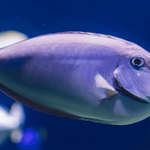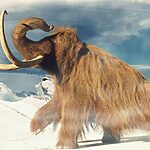The Great Blue Hole is a stunning marine sinkhole located off the coast of Belize. Formed during past ice ages, this circular limestone cave is over 1,000 feet across and descends over 400 feet into cobalt blue waters.
Jacques Cousteau brought international fame to the Hole in 1971, which is filled with stalactites and a diverse ecosystem of coral, fish, sharks, and more. The hole’s sheer size and depth create a unique habitat that attracts daring divers and scientists to explore its geological wonders and biodiversity.
From reef-building corals forming a patchwork of colors to the stealthy glide of a Goliath grouper, prepare to dive into the vibrant aquatic world of Belize’s Great Blue Hole.
Key Takeaways:
- The hole contains a remarkably biodiverse ecosystem of coral, sponges, fish, sharks, rays, turtles and other reef creatures living interconnectedly.
- Iconic species like midnight parrotfish, nurse sharks, and hawksbill turtles rely on their sheltered habitats.
- Its varying depth and geology support different ecological niches – from shallow reefs to dark caverns over 400 feet deep.
- Many rare or endangered species like hammerhead sharks and loggerhead turtles frequent the hole.
- Preserving this diversity is crucial and requires protecting the whole ecosystem plus global conservation of migratory sea turtles.
List of Animals in the Great Blue Hole
Quick Answer: The Great Blue Hole contains an incredibly biodiverse ecosystem of corals, sponges, parrotfish, sharks like hammerheads and reef sharks, sea turtles, lobsters, crabs, nudibranchs, moray eels, and other reef creatures living in interconnected habitats within the sinkhole and surrounding reef.
| Species Category | Details |
| Iconic Fish Species | Includes Midnight Parrotfish and various juvenile reef fish. Parrotfish are essential for coral health, and the hole acts as a nursery for many young fish species. |
| Sharks | Caribbean Reef Sharks, Nurse Sharks, Hammerhead Sharks, Bull Sharks, and Blacktip Sharks inhabit the hole, each playing a crucial role in the marine ecosystem. |
| Sponges and Corals | Form the foundation of the ecosystem, providing shelter and nutrients for a wide range of marine life. Preservation of these organisms is vital for the entire marine food web. |
| Sea Turtles | Loggerhead and Hawksbill turtles use the hole as a migratory path and feeding ground, highlighting the ecological connectivity of marine habitats. |
| Mollusks | Diverse mollusks, including sea hares, cuttlefish, and octopuses, exhibit a range of survival strategies and contribute to the balance of the food web. |
| Crustaceans | Play various ecological roles, with species like shrimps, lobsters, and crabs contributing to nutrient recycling and overall water quality. |
| Echinoderms | Include sea stars, sea urchins, and sand dollars, each occupying unique ecological niches and showcasing remarkable regenerative abilities. |
| Algae and Seagrasses | From the foundation of the ecosystem, providing shelter and nutrients for a wide range of marine life. Preservation of these organisms is vital for the entire marine food web. |
Formation During the Quaternary Glaciation
The Great Blue Hole lies near the center of the Lighthouse Reef and was formed during the Quaternary Glaciation period when sea levels were much lower. As the ocean began to rise again, the flooded sinkholes and caves slowly formed into what is now known as a vertically elongated karst limestone sinkhole.
The clear blue water stands in stark contrast to the much shallower turquoise waters surrounding the sinkhole.
A Rich Ecosystem
The depth and shelter provided by the hole have allowed a rich and diverse ecosystem of reef sharks, mid-size fish, and more to develop. Jacques Cousteau brought his research vessel Calypso here in 1971 and declared it one of the top ten scuba diving sites in the world.
Numerous species of reef-dwelling and aquatic life not found elsewhere in Belize make the Great Blue Hole their home.
Stalactite Structures
The karst limestone structures and stalactite formations of the Great Blue Hole are awe-inspiring yet highly fragile. Stalactites hang from overhangs where drops of water deposit calcite over long periods of time.
Explorers must take great care not to disturb or break off any portion of these magnificent natural structures which take thousands of years to form. Preservation is key as the stalactites and limestone sculptures create an unparalleled underwater viewing experience.
Significance to the Belize Barrier Reserve System
The hole lies within the Lighthouse Reef system, which combined with the Belize Barrier Reef Reserve System has been declared a UNESCO World Heritage Site. Jacques Cousteau’s recognition of the Great Blue Hole brought international attention to the importance of preserving this natural wonder and the incredible biodiversity of the entire reef system.
It remains crucial to balance tourism with conservation efforts to protect the hole and its stalactites for future generations.
The Marine Life of the Great Blue Hole
The Great Blue Hole is home to a remarkably diverse array of marine life. The clear blue waters and complex limestone structures provide ideal habitats for coral, sponges, fish, sharks, turtles, and a multitude of other species.
At the foundation of this thriving ecosystem are the corals that form the magnificent reef surrounding the sinkhole. Brain corals, fan corals, and soft corals in an array of colors create a stunning underwater seascape. These coral communities support a vast diversity of reef fish like snapper, grunt, angelfish, and parrotfish that rely on the reef system for food and shelter.
In the deeper, darker waters of the hole itself are predators like nurse sharks, blacktip reef sharks, and Caribbean reef sharks. Those brave enough to venture into the blue abyss may spot imposing hammerhead sharks and reef squid hunting for prey. At over 400 feet deep, much of the sinkhole environment remains unexplored.
Lesser-known species also abound, from spiny lobsters hiding in crevices to technicolor nudibranchs grazing on sponges. Spotted eagle rays and loggerhead turtles sometimes stop to rest on ledges inside the hole during their long migrations. Careful observation reveals a complex web of organisms interacting and depending on each other to maintain balance within the ecosystem.
The variety of habitats created by the Great Blue Hole’s unique geology supports one of the most significant and thrilling collections of marine life in the Western Hemisphere.
From tiny plankton to 3-meter-long sharks, the hole harbors an astounding spectrum of species playing vital ecological roles. Their conservation remains imperative as these plants and animals distinguish this Natural Wonder of the World as a sublime oasis pulsing with aquatic life.
Iconic Fish Species
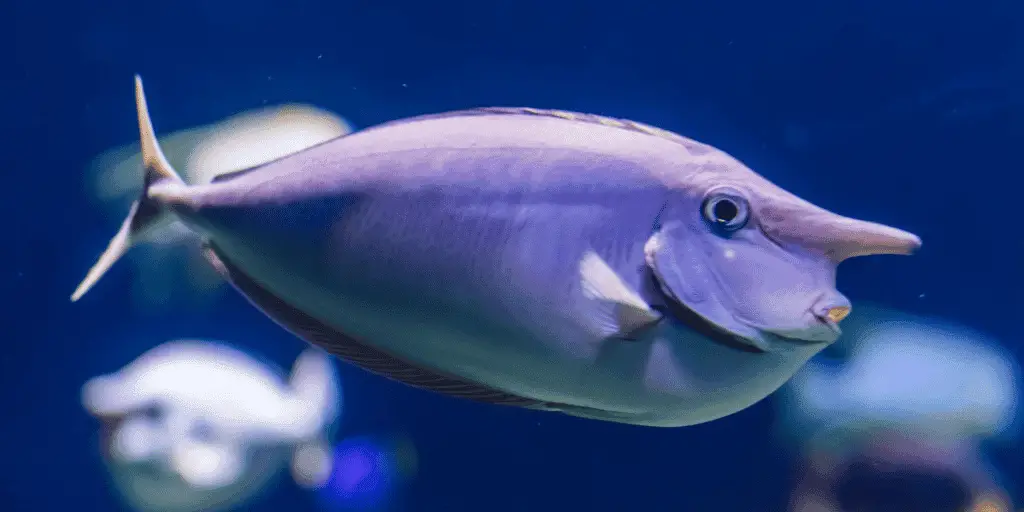
Midnight Parrotfish
The vibrant Midnight Parrotfish gets its name from the rich blue and purple hues adorning its scales. This medium-sized fish plays a crucial role in maintaining the health of coral reef systems. Using its beak-like jaws, the parrotfish grazes on algae coating the reef, clearing space for new coral polyps to grow.
Interestingly, Midnight Parrotfish sleep at night by secreting a mucus cocoon for protection. This unusual sleeping habit underscores the threats these fish face from predators. Protecting parrotfish is key to preserving coral – without them, algae would overwhelm reefs. The sheltered Great Blue Hole serves as a refuge for these critical ecosystem helpers.
Juvenile Fish Species
The Great Blue Hole acts as an ideal nursery habitat for many juvenile reef fish like snapper, angelfish, and barracuda. Sheltered coral crevices provide safe zones for young fish to mature while avoiding larger predators. These species arrive to the hole at distinct stages of development – some still wearing characteristic “baby stripes” while others blend in cleverly with their environment.
By studying where certain juveniles cluster around the sinkhole, scientists gain insight into the interconnectivity of habitats essential for each life stage. It also informs conservation efforts – protecting nursery grounds like the Great Blue Hole ensures the renewal of fish populations on surrounding Belizean reefs. Safeguarding these extraordinary underwater sanctuaries maintains balance across the intricate food web.
The Sharks of the Great Blue Hole
Caribbean Reef Sharks
The Caribbean Reef Shark is one of the top predators within the Great Blue Hole ecosystem. An adult can grow over 2 meters in length and frequently hunts smaller fish, lobsters, and even turtles. Their sleek, streamlined bodies allow them to swim quickly and make rapid turns to catch prey. You can also find these sharks in Aruba.
As apex predators, Caribbean Reef Sharks play a vital role in maintaining balance on the reef by keeping mid-level predators under control. Their presence also affects the behavior of prey species, promoting healthy ecosystem functioning. Protecting these inquisitive creatures is key to preserving the unique biodiversity of the Great Blue Hole.
Nurse Sharks
The relatively docile Nurse Shark spends its days resting in caves and under coral ledges in the Great Blue Hole. Unlike other sharks, the nurse shark has powerful crushing jaws suited perfectly for feasting on hard prey like lobsters, crabs and urchins. Small frond-like barbels sweep along the sea floor, enabling the shark to locate crustaceans buried in the sediment.
Juvenile nurse sharks utilize the Blue Hole as a safe haven to develop, hidden from large predators that cannot maneuver as easily through the hole’s tunnels and caverns. Conservation of these peaceful sharks focuses on protecting breeding grounds and limiting disturbances to their habitat.
Hammerhead Sharks
Few sights inspire more awe than a Hammerhead Shark gliding through the darkness of the Great Blue Hole. Their unique cephalofoil contains specialized sensory organs that allow them to detect faint electrical signals from hidden prey. This exotic adaptation provides excellent hunting capabilities in deep, low-light environments.
Two species of hammerhead frequent the deeper regions of the hole – the Scalloped Hammerhead and the endangered Great Hammerhead. These mysterious creatures remain sensitive to increasing threats from fishing and demand full protection across their global territories. Safeguarding their habitat and food sources ensures future generations can continue to wonder at their primordial allure.
Bull Sharks
Bull Sharks earn their name from their stocky appearance and highly aggressive nature. These opportunistic hunters share the Caribbean Reef Shark’s preference for shallow reef waters but exhibit an amazing physiological adaptation – they can survive in freshwater environments due to specialized kidney functions.
This ability to frequent rivers and estuaries makes Bull Sharks the most continuously dangerous shark species to humans. But it also makes them incredibly vulnerable to habitat degradation from coastal development and freshwater diversion. Protecting connectivity between their coastal, estuarine, and river ecosystems is vital for their survival.
Blacktip Sharks
Few marine animals capture grace and speed as perfectly as the Blacktip Shark. Cruising along shallow reefs, their sleek shape and prominent black fin markings announce their presence. Blacktips utilize the rich hunting grounds of the Great Blue Hole to search for fish, lobster, and octopus.
These agile hunters form large seasonal aggregations and are susceptible to overfishing during these times. Preventing exploitation of spawning groups is crucial. And while fearsome in appearance, attacks on humans are extremely rare. Preserving these sharks ultimately protects the health of coral environments humans rely upon for recreation and sustainability.
Sponges and Corals: The Great Blue Hole’s Living Architecture
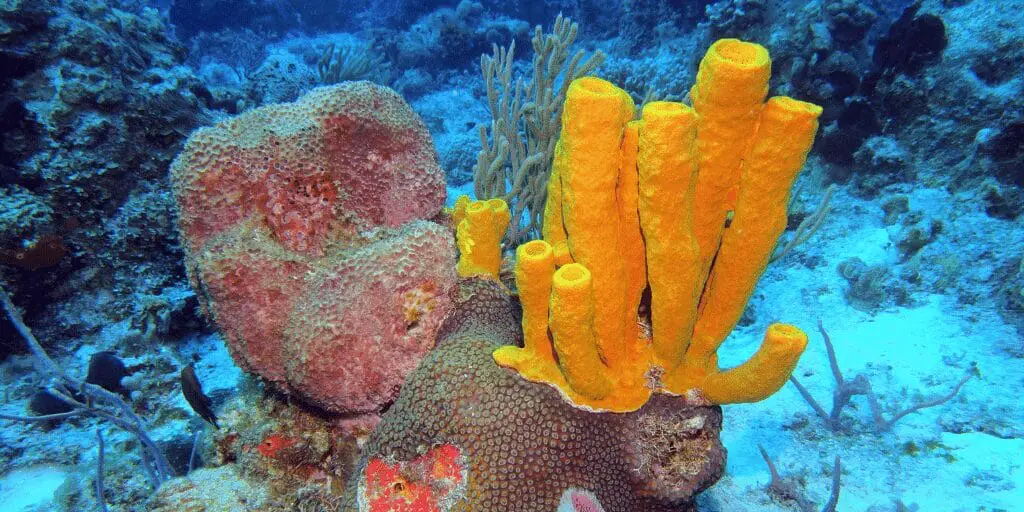
Sponges and corals form the very foundation of the Great Blue Hole’s vibrant ecosystem. Vibrant orange elephant ear sponges contrast brightly against the deep blue waters of the sinkhole. Delicate lace and vase sponges provide shelter for darting fish and crustaceans. The intricate colonies of brain, star, and pillar corals create a living seascape visited by turtles, sharks, and visiting divers.
These sessile creatures cement themselves to the limestone walls and ledges, filtering nutrients from passing currents. Sponges and corals engage in complex symbiotic relationships with single-celled algae, which provide essential nutrients through photosynthesis. In return, the structures of sponges and coral provide safe havens for algae to flourish.
But these vital organisms now face escalating threats – rising ocean temperatures trigger devastating coral bleaching events. Agricultural runoff chokes reefs with algal blooms. Preserving the Great Blue Hole’s diverse community of sponges and coral remains imperative through improved fishing practices and coastal development policies. Their beauty and ecological contributions make them well worth saving.
For over 100 million years, sea turtles have traversed the world’s oceans, succeeding where even the largest dinosaurs failed. Two ancient species – the loggerhead and hawksbill turtle, make the arduous cross-ocean migration to the sheltered habitats of the Great Blue Hole.
These reptilian mariners nest in massive congregations along the eastern shores of Central America. New hatchlings drift on ocean currents to feeding grounds like the Great Blue Hole, finding refuge from predators within its limestone caves and tunnels. After reaching maturity, adult sea turtles periodically return to their original nesting beaches continuing the cycle.
Sea turtles represent the epitome of nature’s resilience through extensive migrations across entire oceans. But chemical pollution, plastic ingestion, coastal development, poaching, and climate change now threaten these iconic creatures.
Most species of sea turtle are classified as endangered. Preserving their existence for future generations relies upon sustained conservation efforts across borders and entire continents. Their survival istied directly to the health of marine ecosystems across the globe.
Mollusks: Diverse and Intricate Inhabitants of the Great Blue Hole
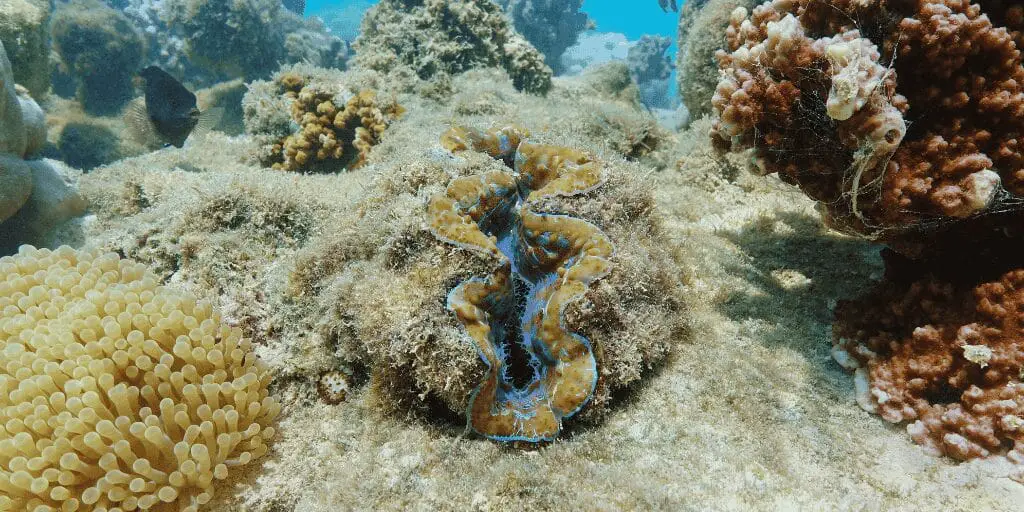
The phylum Mollusca contains a remarkably diverse array of organisms, second only to arthropods in the sheer number of species. Within the clear blue waters of the Great Blue Hole, visitors can spot giant purple sea hares grazing on algae, flamboyant cuttlefish flashing warning displays, and octopuses squeezing into narrow crevices in search of crabs.
These incredible animals utilize a variety of survival strategies. Some mollusks form protective shells to avoid predation, while others blend in using camouflage. Poisonous mucus secretions in sea hares deter hungry fish. Cuttlefish mesmerize with pulsing colors and textures for defense and communication. Squids rocket through the water column at astonishing speeds to capture prey.
The variety of molluscan feeding strategies also helps maintain balance in the food web. Herbivorous snails and slugs prevent algal overgrowth on coral structures with their rasping mouthparts.
Predatory octopuses control populations of shellfish and crustaceans. Together with fish, sharks, and humans, mollusks form vital links in the circle of marine life.
Crustaceans: The Great Blue Hole’s Armored Marvels
Crustaceans fill a variety of unique ecological roles throughout the Great Blue Hole’s caverns and tunnels. Groups like shrimps, lobsters, and crabs can be found hiding amongst coral crevices or scavenging the seafloor for sustenance. Their protective exoskeletons come in diverse shapes, sizes and colors – conveyor-belt mouths in shrimp juxtapose the formidable pincers of a lobster.
Many crustaceans act as nutrient recyclers – breaking down decaying plants and animals to make energy available for other organisms. This process improves overall water quality. Several crab species maintain balance by preying on animals like sea stars that could otherwise overwhelm reef environments.
Unfortunately, the fragility of crustacean life stages combined with increasing fishing pressures have endangered certain species. Establishing fishery quotas and enforcement helps curb overexploitation issues facing crustaceans. When properly maintained, their activities propagate healthy system functioning, allowing the Great Blue Hole to keep its title as an ecological wonder of the natural world.
Echinoderms: Stars of the Marine Ecosystem
Scattered across the benthic landscapes of the Great Blue Hole lies one of the most bizarre phyla occupying Earth’s oceans – the echinoderms. Their name stems from the Greek words for “spiny” and “skin”, referencing the endoskeleton of calcified plates covering these exclusively marine animals.
Five main radial arms or rays extend from a central disc in sea stars, granting them symmetry unlike any creature with a spine. Sea urchins and sand dollars share this pentaradial quirk. Even slower-moving sea cucumbers display radial symmetry in their internal anatomy.
Echinoderms fill a variety of ecological roles within the sapphire sinkhole. Tiny brittle stars act as detritivores – cleaning reefs of decaying debris and parasites. In contrast, the formidable crown-of-thorns sea star consumes live coral polyps, requiring population control. Most remarkably, echinoderms can regenerate lost limbs – providing insights into tissue regrowth potential.
While captivating and ecologically significant, changing ocean temperatures and chemistry threaten the health of echinoderm populations. However, their regenerative capabilities may enable some adaptation to climate change. Further study can clarify how best to support the stars of the sea through greater environmental fluctuations.
Algae and Seagrasses: The Great Blue Hole’s Underwater Meadows
Microscopic algae and waving green seagrasses form the base of the food web in the Great Blue Hole’s vivid seascape. Photosynthetic pigments within these organisms absorb sunlight and convert inorganic molecules into energy-rich carbohydrates. This fuels the rest of the ecosystem – shrimp graze on algae while green turtles nibble seagrasses.
These underwater meadows also provide key ecological services to the local marine community. Seagrass beds stabilize sediment and filter polluting nutrients. Their long leaves harbor juveniles of many vertebrate and invertebrate species. Additionally, the nooks and crannies of algal turf scrub the surrounding water of contaminants.
Unfortunately, increases in water temperature, storm severity, and agricultural runoff threaten these foundational marine plants. Conservation efforts emphasize improved farming techniques and wiser coastal development strategies to protect algae and seagrasses. If lost, the entire food web of the Great Blue Hole could collapse – lending critical importance to maintaining the health of these primary producers.
Conclusion: Preserving the Great Blue Hole’s Natural Wonder
The sheer diversity of marine life thriving in the Great Blue Hole stands as a testament to nature’s splendor. From tiny bioeroding sponges to 3-meter apex predators, the hole’s geology and sheltered waters support a vibrant web of organisms.
Reef-building corals form towering walls decorated by ethereal tube sponges. Schools of parrotfish exhibit flashy mating displays, unfazed by prowling sharks. Hawksbill sea turtles have used these caverns as nurturing grounds for millions of years.
Sadly, many of the species here face increasing threats – warming oceans trigger mass coral bleaching events that can devastate reef ecosystems. Overfishing and habitat destruction also endanger creatures as varied as nautiluses, sea stars, and whale sharks. Even the hand-sized peppermint shrimp plays a role in recycling nutrients through the food web.
Protecting the diversity found in the hole remains imperative not just for its contributions to human joy, but to maintain balance across its interconnected habitats. Continued research and careful monitoring helps managers understand population changes for vulnerable marine life. Well-regulated tourism helps bring appreciation for the natural wonder of the oceans.
There arguably exist few places on Earth that so potently inspire awe at the natural world’s sublime beauty. An oasis nurturing ancient life in the blue abyss, the unmatched biodiversity of the Great Blue Hole demands preservation so future generations may also wonder at its ever-unfolding mysteries.
- What Should I Do If A Koala Bites Me? Safety Guide - 2024-05-30
- Are Kangaroos Born Without Hind Legs? A Fascinating Journey - 2024-05-30
- Animals That Look Like Squirrels - 2024-05-30



